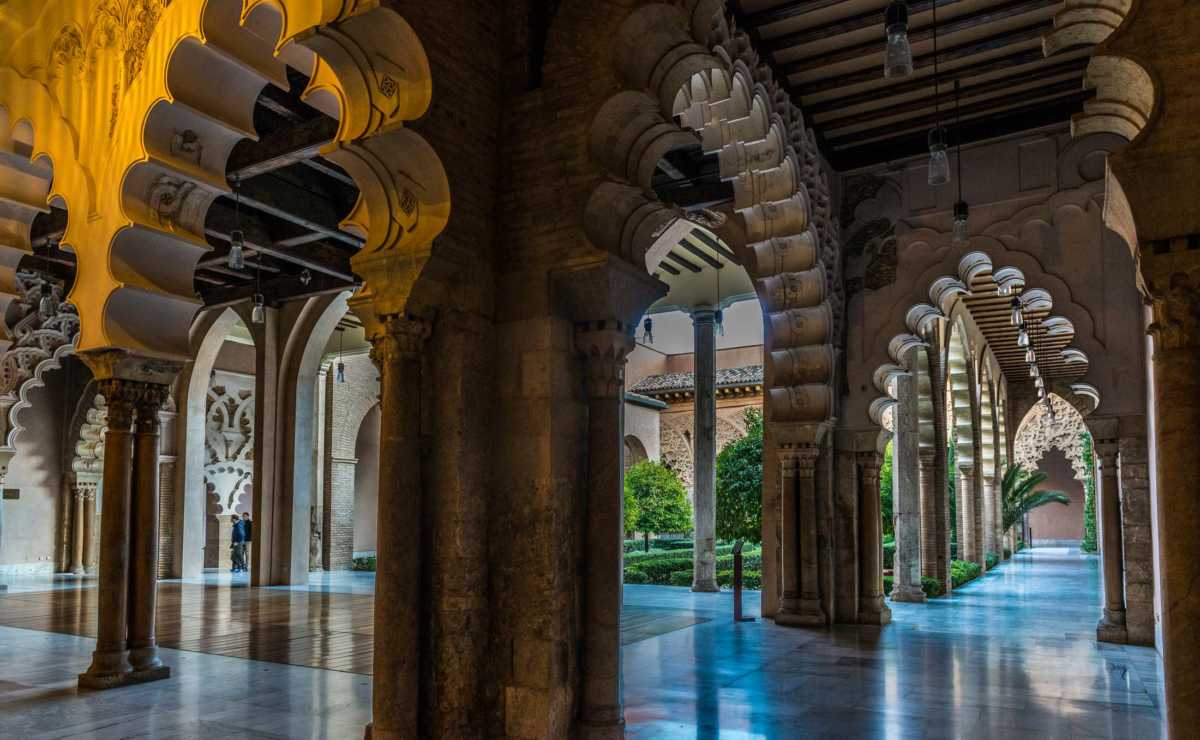
After the reconquest of Zaragoza in the early 12th Century, the Aljafería, the palace of the Moorish king of Zaragoza, was transformed into a palace for the victorious Christian king of Aragon, Alfonso I and his successors.
Originally begun in the 9th Century, the palace also served as a fortress both before and after its capture by Alfonso. It underwent several remodelings by various Aragonese kings, and even served some time as a barracks for soldiers and even stables. Extensive damage from the various uses is evident in the many walls where the original decoration was stripped entirely, or where only a few bits remain. The buildings were extensively restored in recent years, and much of the beauty of the original Moorish decoration is evident.
Also, I do sort of like what Fernando and Isabel did with their ceilings. They certainly had egos to display, and their iconography is on view all over reconquered Spain. Granada, Toledo, Córdoba and many other cities that were formerly Moorish now sport the familiar bunched arrows, the yokes, the Tanto Monta verbiage, and the united crest of Castilla and Aragon.
Back in the days when not many could read, such symbols were important for conveying the official view of the government. Not unlike Twitter today, I guess.
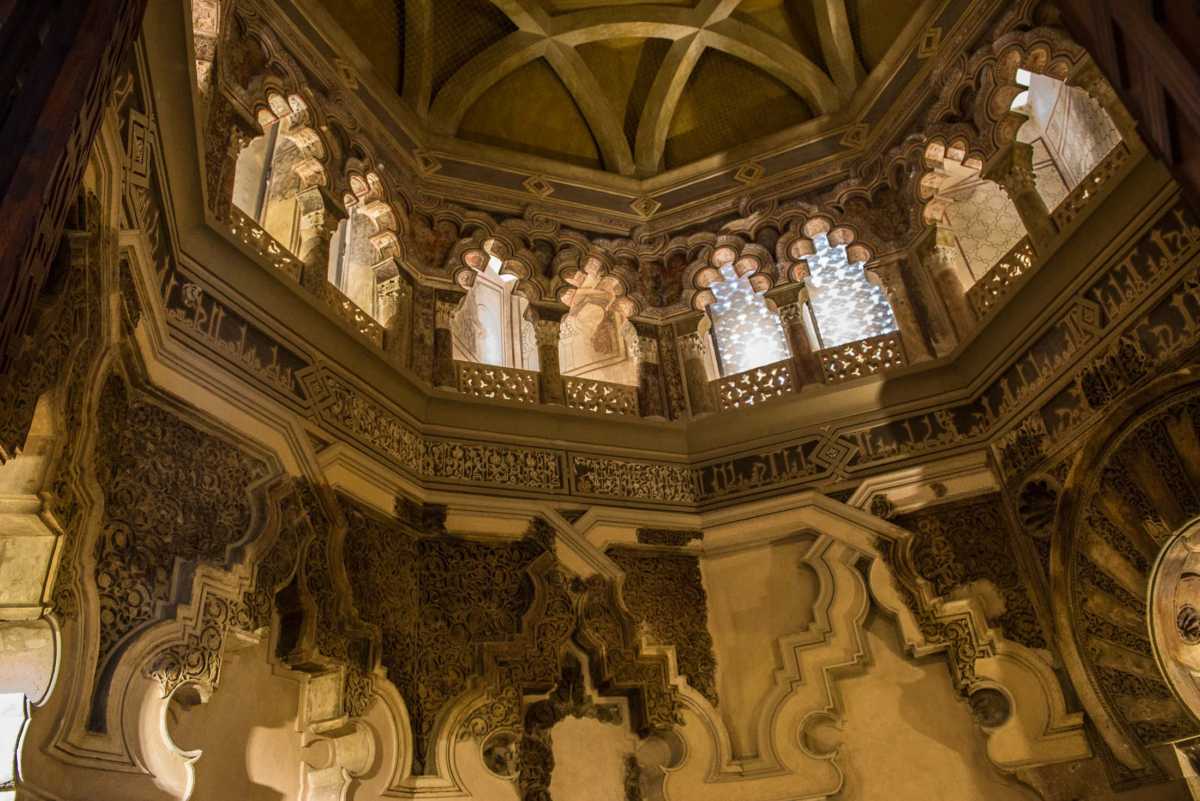
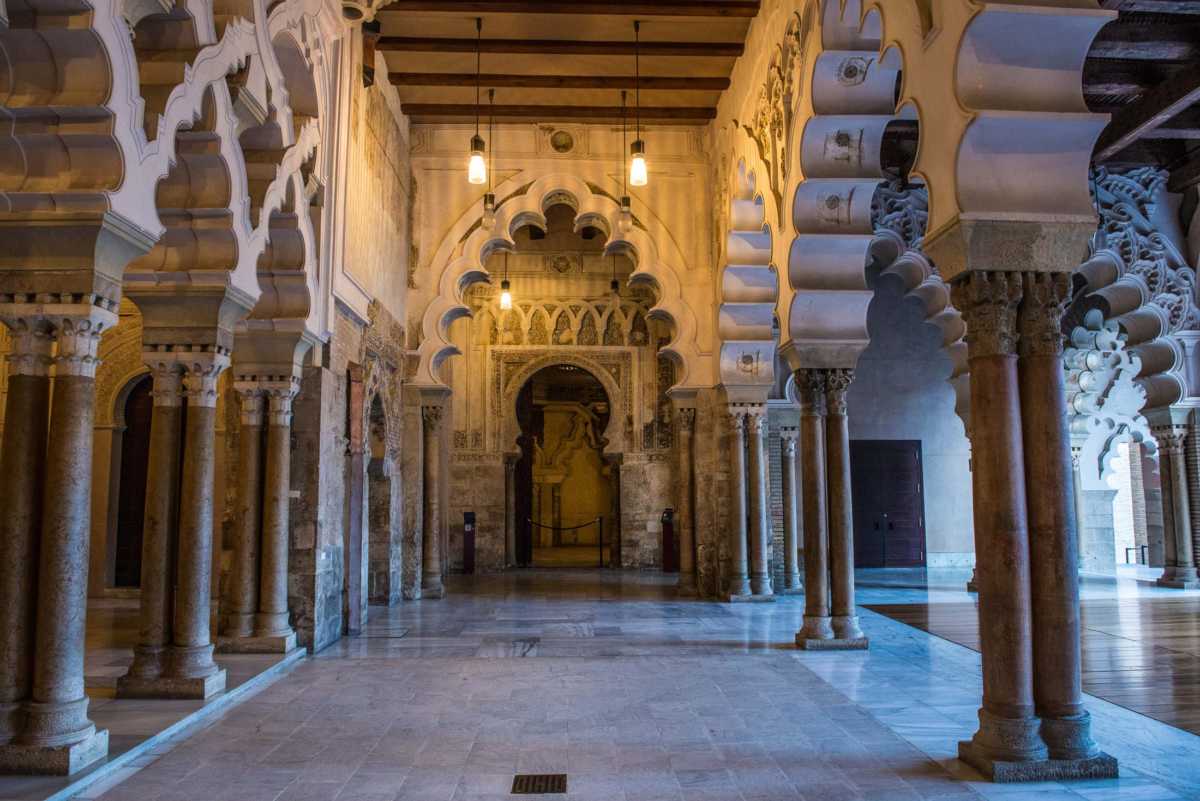
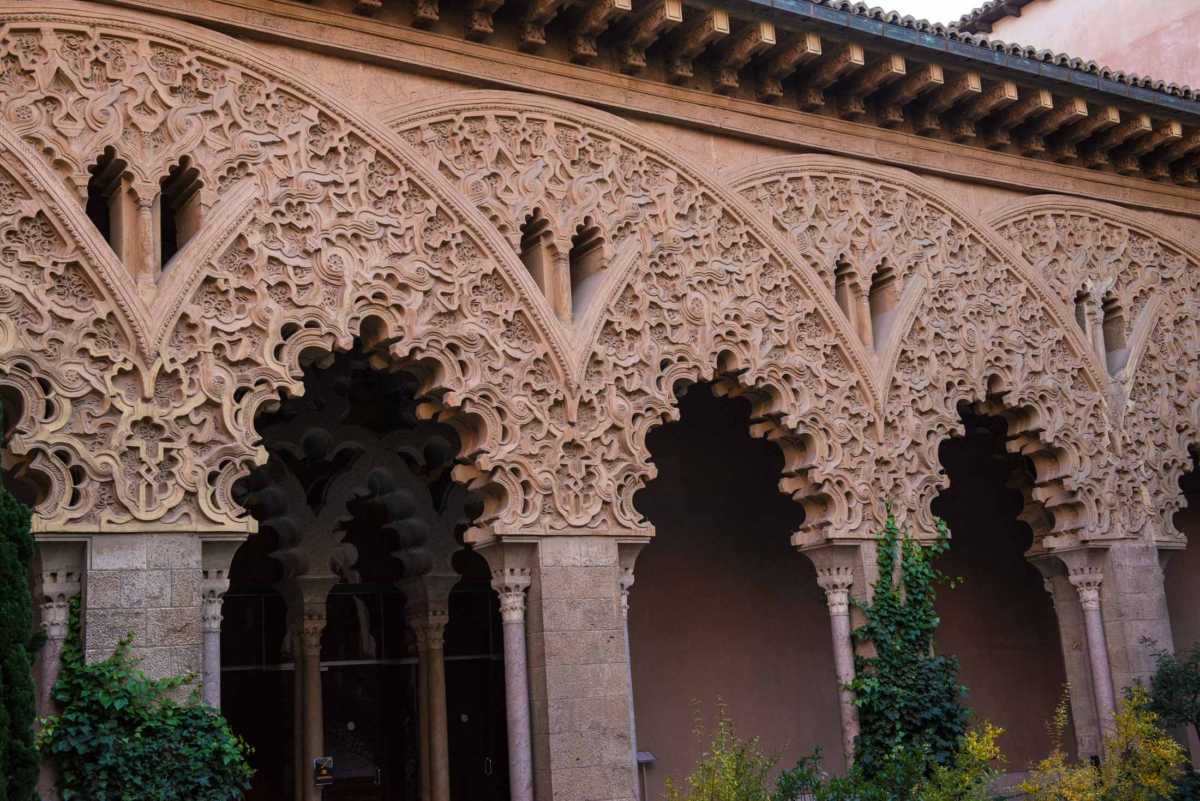
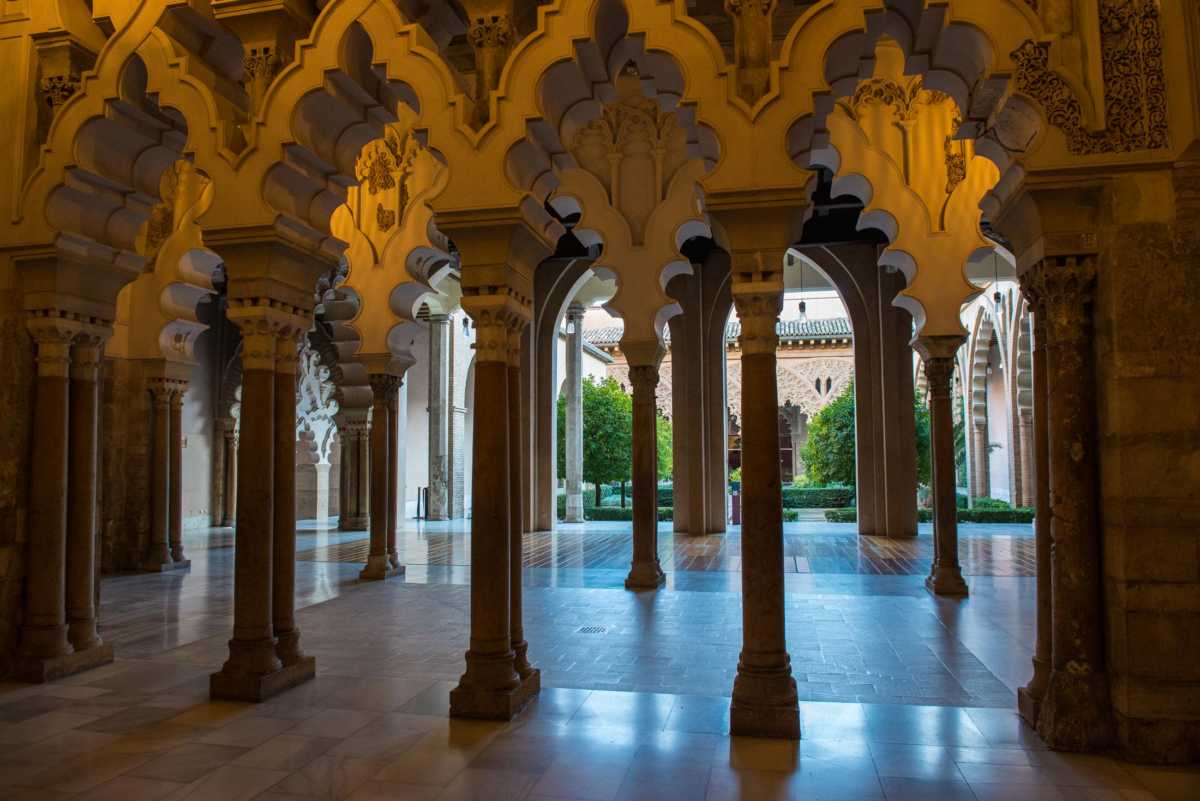
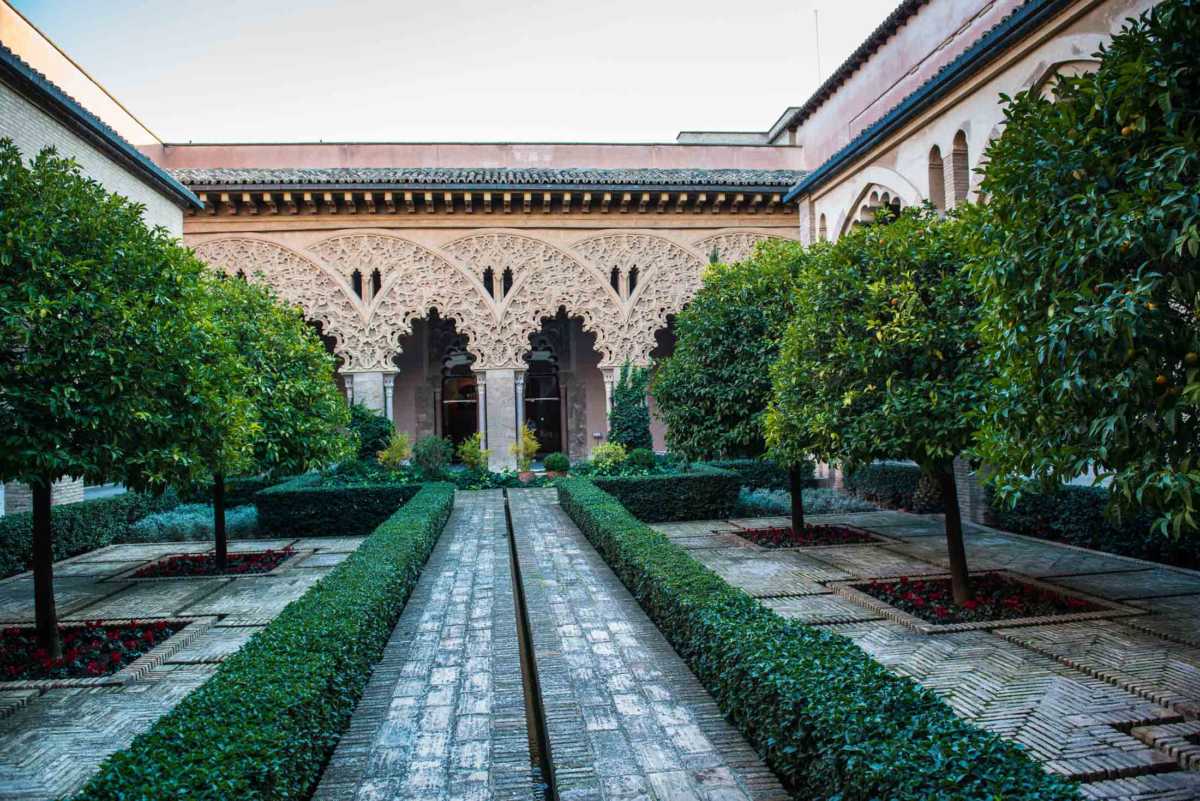
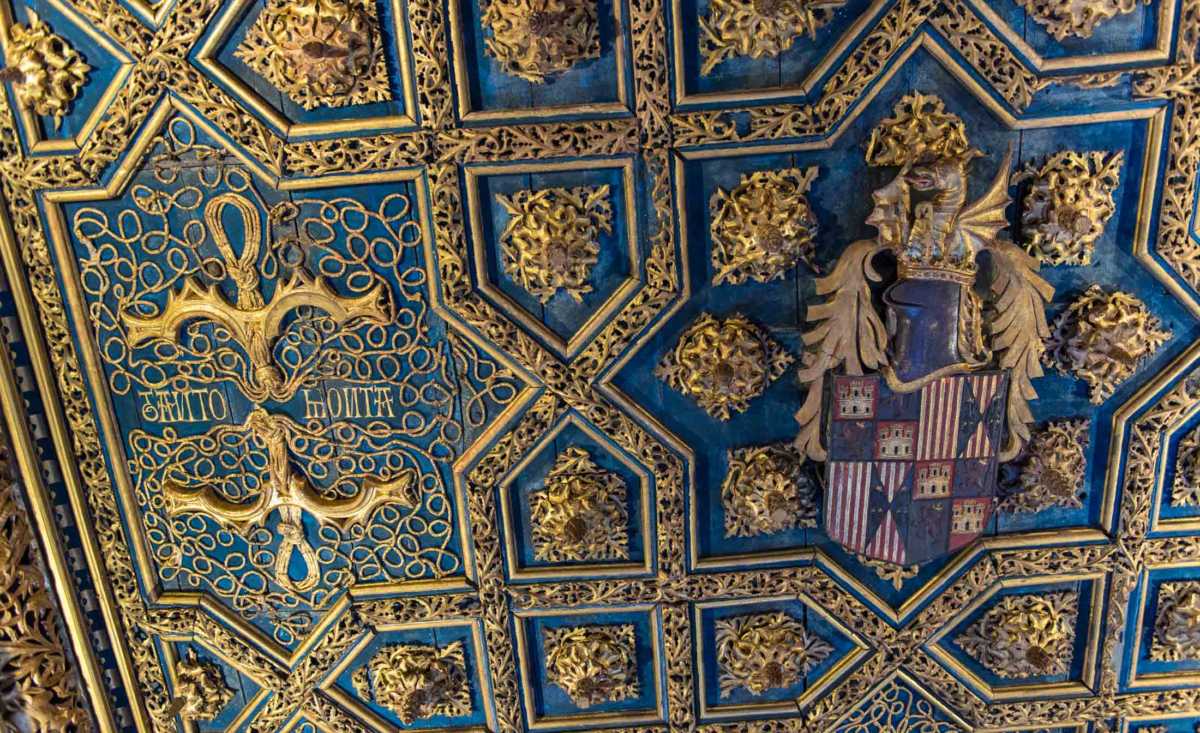
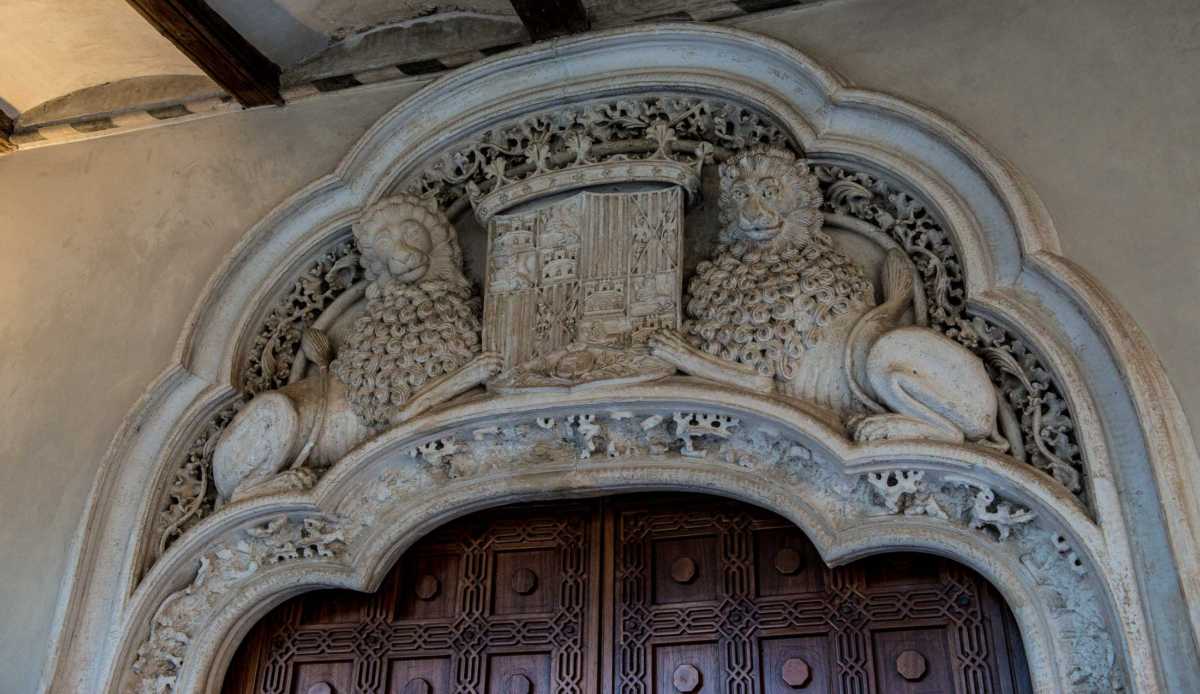
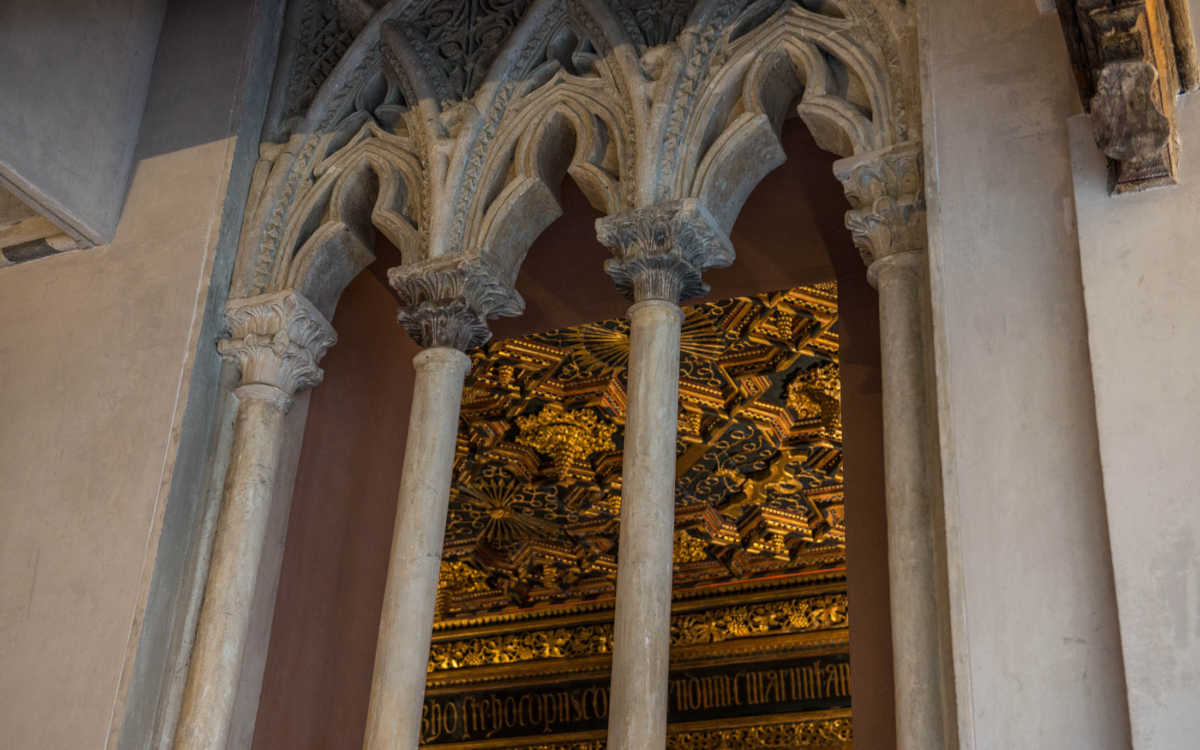
You can see more on the fantastic monuments of Zaragoza, including Zaragoza's two spectacular cathedrals.
Up Your Travel Skills
Looking to book your next trip? Use these resources that are tried and tested by us. First, to get our best travel tips, sign up for our email newsletter. Then, be sure to start your reading with our Resources Page where we highlight all the great travel companies and products that we trust. Travel Accessories: Check out our list of all the accessories we carry to make getting there and being there a lot easier. Credit Cards: See our detailed post on how to choose the right travel rewards credit card for you. Flights: Start finding the very best flight deals by subscribing to Thrifty Traveler. Book your Hotel: Find the best prices on hotels with Booking.com. See all of the gear and books we like in one place on our Amazon shop.Got a comment on this post? Join the conversation on Facebook, Instagram, or Threads and share your thoughts!


Comments are closed.